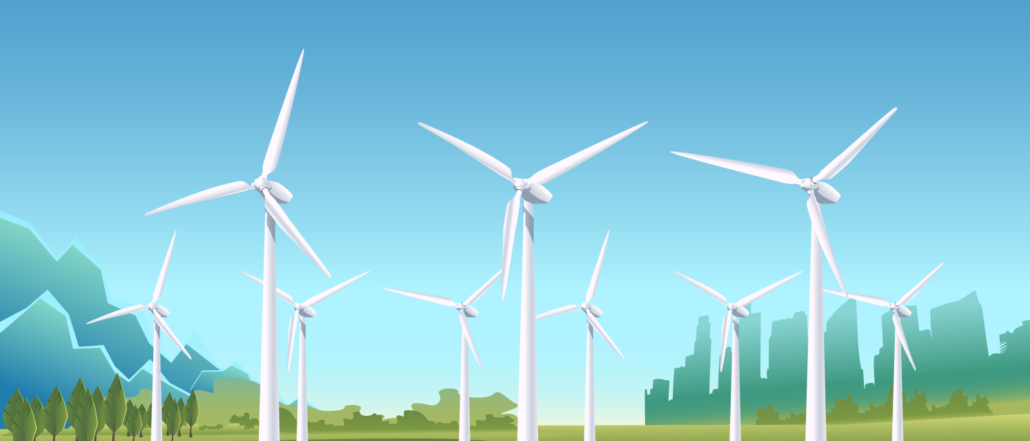
Every year on June 5, the global community comes together to celebrate World Environment Day. This special day aims to raise public awareness of the importance of preserving our planet and promoting a sustainable future. This year, we’d like to highlight an essential aspect of environmental protection: the circular economy.
The circular economy is an economic model that aims to reduce waste and optimize the use of resources by closing the life cycles of products, materials and resources. By adopting circular practices, we can not only reduce our environmental impact, but also stimulate innovation, create jobs and strengthen economic competitiveness.
Why is the circular economy important?
Our current economic model is linear: we extract raw materials, transform them into products, use them and then throw them away. This model has harmful consequences for the environment and our health. Here are a few figures that underline the importance of the circular economy:
* Every year, we extract 100 billion tonnes of raw materials, twice as much as 30 years ago.
* Global waste production is set to increase by 70% by 2050 if we don’t change the way we produce and consume.
* The circular economy could generate $4.5 trillion in economic benefits by 2030, while reducing greenhouse gas emissions by 39%.
What’s more, the circular economy offers numerous social and economic benefits. It creates local jobs that cannot be relocated, fosters innovation and creativity, and strengthens the resilience of businesses and communities.


How can we move to a circular economy?
To move to a circular economy, we need to rethink the way we produce, consume and manage waste. Here are a few ideas for action:
* Design durable and repairable products: products must be designed to last longer and be easy to repair. This reduces waste and extends product life.
* Promote the functionality economy: instead of selling products, companies can sell services or solutions. For example, a clothing company may offer a clothing rental service rather than selling new clothes.
* Encourage reuse and recycling: end-of-life products should be reused or recycled wherever possible. This reduces waste and conserves natural resources.
* Raising public awareness: consumers have a key role to play in the transition to a circular economy. They need to be informed and made aware of environmental issues and sustainable practices.
Concrete examples of the circular economy
Many companies and organizations have already adopted circular practices. Here are a few concrete examples:
Concrete examples of the circular economy
Many companies and organizations have already adopted circular practices. Here are a few concrete examples:
CrushON is more than just a platform: it’s the B2B operating system for circular fashion. As a company committed to making responsible textile consumption the norm, CrushON democratizes circular fashion by connecting second-hand fashion professionals with brands and retailers wishing to develop their circular offer, both online and offline.
The Hipli startup’s mission is to empower everyone to take action against e-commerce waste, which includes the 1.7 billion parcels shipped annually in France, generating 300,000 tonnes of packaging waste. The startup encourages simple actions by disseminating information on the environmental impact of e-commerce packaging, while designing packages that are practical, easy to use and a pleasure to receive.
Located between Nantes and Saint-Nazaire, The biscuiterie Handi-Gaspi, operates within a local ESAT, promoting the inclusion of people with disabilities. These visionary entrepreneurs have opted for a circular approach, using unsold organic bread from bakeries in Nantes to concoct cookies that are as delicious as they are eco-responsible.
CircularPlace supports companies in their CSR initiatives through the sale, donation and exchange of resources such as equipment, raw materials and finished products. We target large groups multi-sites, manufacturers and local authorities. .
These examples show that the circular economy is not only possible, but also profitable and beneficial for the environment and society.
This year’s theme is ecosystem restoration, which is essential for preserving biodiversity and combating climate change.
World Environment Day is an opportunity to make a commitment to the environment and promote sustainable practices. This year’s theme is ecosystem restoration, which is essential for preserving biodiversity and combating climate change.
Everyone can help restore ecosystems by adopting sustainable practices in their daily lives, such as reducing water and energy consumption, cutting down on waste, using sustainable modes of transport, planting trees and supporting businesses and organizations committed to the environment.
The circular economy is a sustainable and resilient economic model that offers numerous social, economic and environmental benefits. By adopting circular practices, we can reduce our environmental impact, stimulate innovation and create local jobs. World Environment Day is an opportunity to make a commitment to the environment and promote sustainable practices. Together, we can create a greener, more prosperous future for all.
Read also
Questions about CircularPlace?



